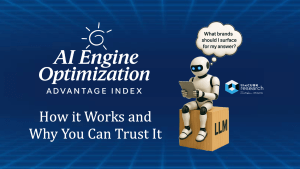The Linux Foundation’s Open Source Summit North America (OSSNA) 2025 in Denver is highlighting how open source is gaining spotlight time, particularly for enterprise leaders driving application development and modernization. With more than 225 sessions spanning 15 specialized tracks and 13 co-located events, OSSNA is poised to be less a traditional technical conference and more a living dashboard of where open source stands, and where it’s headed, as the fuel of digital transformation.
What’s already standing out most is the unmistakable emphasis on application modernization. A unified theme emerging across keynotes and technical deep-dives: the modern enterprise stack is rebuilt on open source foundations, prioritizing velocity, scalability, and adaptability. Cloud-native architectures, AI-powered developer tooling, and edge computing strategies are now table stakes. Sessions emphasize real-world implementations over theory, reflecting a community that’s moved past experimentation into operationalization. If OSSNA 2025 has made anything clear, the next era of enterprise software will be driven by open innovation, community collaboration, and a focus on building for resilience at scale.
Accelerating Digital Modernization
The themes from OSSNA are tightly aligned with the findings from theCUBE Research, which indicate that 78% of enterprises cite “accelerating digital modernization” as their primary motivation for increasing open source adoption. Additionally, 61% of organizations actively invest in platforms that blend AI-driven services with cloud-native application frameworks; a trend we saw last week in this year’s App Dev Done Right Summit.
Sessions throughout the week are tailored to application development and modernization spanning multiple tracks. For instance, “Effortless Secure Traffic Control with Kubernetes Gateway API” explores advanced microservices traffic routing, a must-have capability for modern cloud-native applications. Another session, “Why Rust and Zephyr Are a Good Fit,” showcases the convergence of modern systems programming with real-time embedded operating systems, also an essential trend as edge computing is reshaping how applications are developed and deployed closer to the user.
Developers and architects attending OSSNA 2025 will find practical guidance in CI/CD automation, observability, and secure software supply chain management. In the cdCon co-located track, sessions explore GitOps pipelines, testing frameworks, and platform engineering, reflecting a broader industry move toward internal developer platforms (IDPs) that abstract infrastructure complexity and boost deployment velocity. theCUBE Research notes that 64% of developers report faster time to production when using platform engineering practices, and OSSNA content directly supports this operational pivot.
Another important dimension of the summit is compliance and security, with sessions such as “SBOMs for Linux Foundation Projects” emphasizing the growing role of software bills of materials in modern development pipelines. This aligns with regulatory pressure and theCUBE Research’s data showing that 72% of IT decision-makers prioritize supply chain transparency in their 2025 planning roadmaps. As government mandates around secure software development lifecycle (SSDLC) practices tighten globally, OSSNA provides practical roadmaps to integrate standards like SPDX into existing workflows.
Understanding the Ecosystem
What makes OSSNA 2025 stand out is its comprehensive ecosystem view. It’s about much more than writing code. We’re seeing the focus shift to making that code scalable, secure, observable, and compliant across heterogeneous environments. Topics like state persistence over kexec, observability integration in container-native systems, and integrating AI using platforms like GraphRAG represent the next-generation developer toolkit. These themes are particularly relevant as enterprises adopt multicloud and edge strategies, with 59% of organizations now running workloads across more than two public clouds and 43% actively investing in edge-native application architectures, according to theCUBE Research.
The event also addresses the human and operational elements of modernization. Sessions such as “Turning Policies, Standards & Governance Into Innovation Enablers” and “Who Will Maintain the Future?” emphasize the need to align organizational structure and culture with technology choices. The graying of the open source maintainer base, in particular, poses risks for the sustainability of critical software infrastructure, especially as modern apps grow more dependent on open source components.
What’s Coming Up Next for Open Source
From a broader perspective, OSSNA 2025 is not only a reflection of where open source is today but also a roadmap for how it will evolve to meet enterprise needs in the future. With leading sponsors such as AWS, Google, Red Hat, and Ericsson backing the summit, and hundreds of sessions targeting real-world use cases, OSSNA is an environment for developers, architects, and technology leaders modernizing applications at scale.
Open Source Summit North America 2025 provides a platform to explore how open source is not just keeping pace with modern software trends but often leading them. We see the focus on shifting from monoliths to microservices, adopting AI-driven application architectures, automating CI/CD pipelines, or enhancing software supply chain security. OSSNA 2025 is delivering the insights, community, and tools to move your strategy forward. The event is for enterprise developers looking to modernize their applications while maintaining governance, performance, and developer experience.



